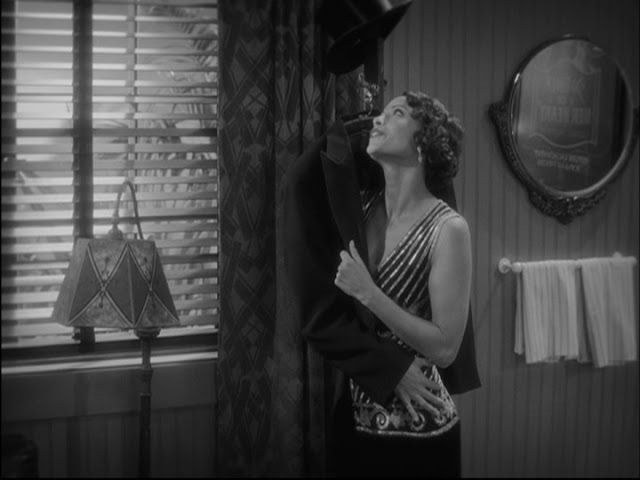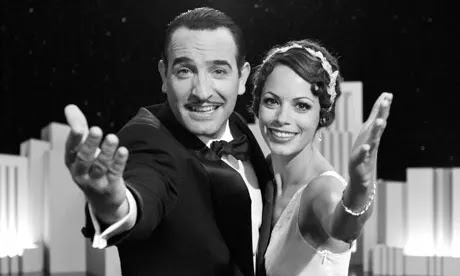In 1927/28 a silent film won the Academy Award for best picture. No one at that ceremony could have predicted that it would be 84 more years before another silent film would win it again, a little film called The Artist. Count on the Hollywood trend to glamorize its past and celebrate the long and storied history of their industry. Just a few short years later another nostalgia fest, La La Land would win best picture, for a minute at least, and would celebrate the musicals of a bygone era offering up tributes to Fred Astaire and Ginger Rogers. Hollywood loves to shine a spotlight on itself, even if that history has some skeletons in it. This would also not be the first time a major Hollywood film examined the subjects The Artistcovers. Singin’ in the Rain did it in 1952. Babylon would do it again in 2022. There is also more than a little of A Star is Born here, too. So what makes The Artist stand out beyond being a nostalgia trip back to an era most moviegoers were not alive to experience firsthand?
The movie opens up with another movie, silent film star George Valentin’s (Jean Dujardin) latest blockbuster release. As the film ends and the audience applauds he takes the stage and mugs for his fans alongside his sidekick Jack (Uggie), a Parson Russell Terrier, and his leading lady Constance (Missi Pyle). Outside the premiere he does some more mugging for the cameras and accidentally bumps into a young woman, Peppy Miller (Bérénice Bejo). George reacts with humor and a picture of the two posing for the cameras makes the front page of the next day’s paper with the headline “Who’s That Girl?” Peppy takes advantage of the publicity by auditioning for a dancing role in an upcoming picture. While on the studio lot she is spotted by George who insists she have a part in his film, drawing a beauty mark on her cheek that will become her trademark. The two have great chemistry on set, impressing the producers and she begins slowly raising through the ranks of stardom, becoming a leading lady.
Two years have passed and the studio, Kinograph, announces that they will cease all productions on silent films as the future of movies lies with talking films. Valentin dismisses this as a passing fad but secretly he fears this coming change, even having a dream where sound is all around but when he tries to speak nothing comes out. With the studio no longer making silent films he decides to write and produce his own. Bad luck and poor timing turn this adventure into a nightmare as expenses pile up, the stock market crashes, and his finished picture is slated to open on the same day Peppy’s newest hit will release. Sure enough, when both films release there is a huge line for her film and his is sparsely attended, although Peppy herself skips her own opening to be at his. Financially in ruins, his wife leaves him and he’s forced to sell off his valuables just to survive. Destitute and frustrated, in a fit of anger he unspools his old film canisters onto the floor and sets them ablaze. The fire gets out of hand and he manages to save the film he and Peppy starred in together before passing out from the smoke. Just like in his movies, Jack saves him from certain death.
It is obvious that the two leads, Dujardin and Bejo, studied the old silent films and based their performances on that. It takes a different style of acting to get critical points across without the benefit of verbal dialogue. It helps, too, that neither star was particularly well known to American mainstream audiences, having worked primarily in french language films prior. More familiar faces in the leads would have spoiled the illusion the way it does whenever John Goodman is on screen. Goodman is a good actor and tries his best but just doesn’t nail the authenticity the way his costars do. Malcolm McDowell appears for less than a minute and nails this style of acting with just that one moment showing a versatility that Goodman just doesn’t have. This movie would have been immensely better had McDowell had the Goodman role instead.
As an homage and love letter to silent cinema it mostly does a good job of emulating that era. There are a few moments, though, where the camera work belies that it was not made back then. There are several shots that would not have been possible with the technology of the time. There are stylized moments used to get across certain messages that circumvent the silent film structure, too. For instance, the dream Valentin has where he begins to hear sounds for the first time uses real sound effects to represent what he’s hearing. This is accompanied by the laughter of dancer girls walking down the alley of the studio backlot. Silent films were also a lot more static in their shots, with camera movements limited whenever possible. This film forgoes the practical realism of a true 1920’s silent film to make it more cinematic for the modern audiences. It’s a perfectly understandable choice but does mar the suspension of disbelief.
As I mentioned above this film owes a good deal of the story elements to A Star is Born. The two leads are not a romantic couple but their stories go along the same trajectory as those in the classic story. As Peppy’s star rises, George’s sets. He is directly responsible for her getting her break as well as his own downfall when he doesn’t take his changing situation seriously. Many silent actors failed to transition to talking films. Sometimes it was the different acting style they could not adapt to, sometimes it was as simple as having an accent that didn’t translate well to a talking film. We hear in the final moments of the film that George has a french accent but we don’t hear enough of his voice to determine how thick it is. Audiences of the time might, however, be used to thinking of him as a dashing American hero and be turned off by his real speaking voice. This coupled with his insistence that the movie industry would stick with silent films over the new talking ones dooms his once profitable career. It was this same arrogant insistence that ended many silent film stars.
In the end George’s despair and depression will lead him down some dark avenues including a suicide attempt. The same thing happens to Brad Pitt’s character in Babylon to lessor effect. It’s melodramatic and almost too much but is saved by a shockingly hilarious title card that is extremely misleading. The use of that card is a stroke of genius that made me gasp and then laugh out loud when I saw what it really meant. It was an inspiring use of gallows humor needed to defuse a very tense moment. It plays for shock value but knows not to linger on that feeling for long.
The Artist was just the type of critical darling aimed at charming the critics and it did just that earning nearly universal acclaim and the Best Picture Award at the 84th Academy Awards. The story is hardly groundbreaking but that’s not what the critics fell in love with. It celebrates a style of filmmaking that many don’t bother going back to anymore. In a world where most people don’t watch movies older than Star Wars this one celebrates a style of movie that can feel archaic yet is just as worth watching as the more modern films. Silent films have had a renaissance of late, not because of this film but because more and more people are getting the opportunity to see them again including whole film festivals dedicated to this era of cinema. The Artist is there to celebrate that as well as how difficult it was for some to navigate the radical change films took when sound came in. It was a daring choice to make it a silent film, itself, but one that paid off in the end.
Academy Award Nominations:
Best Picture: Thomas Langmann (won)
Best Director: Michel Hazanavicius (won)
Best Actor: Jean Dujardin (won)
Best Supporting Actress: Bérénice Bejo
Best Original Screenplay: Michel Hazanavicius
Best Art Direction: Laurence Bennet and Robert Gould
Best Cinematography: Guillaume Schiffman
Best Costume Design: Mark Bridges (won)
Best Film Editing: Anne-Sophie Bion and Michel Hazanavicius
Best Original Score: Ludovic Bource (won)
____________________________________________________
Release Date: October 12, 2011
Running Time: 100 Minutes
Rated PG-13
Starring: Jean Dujardin, Bérénice Bejo, James Cromwell, Penelope Ann Miller, Malcolm McDowell, Missi Pyle, Beth Grant, Ed Lauter, Joel Murray, Ken Davitian and John Goodman
Directed By: Michel Hazanavicius










Comments
Post a Comment